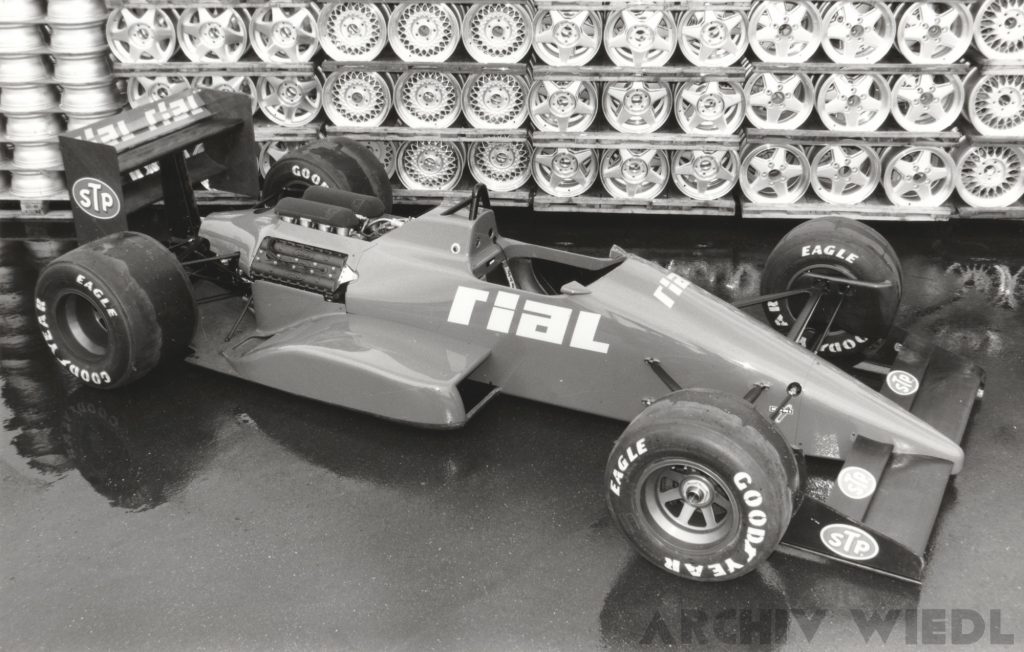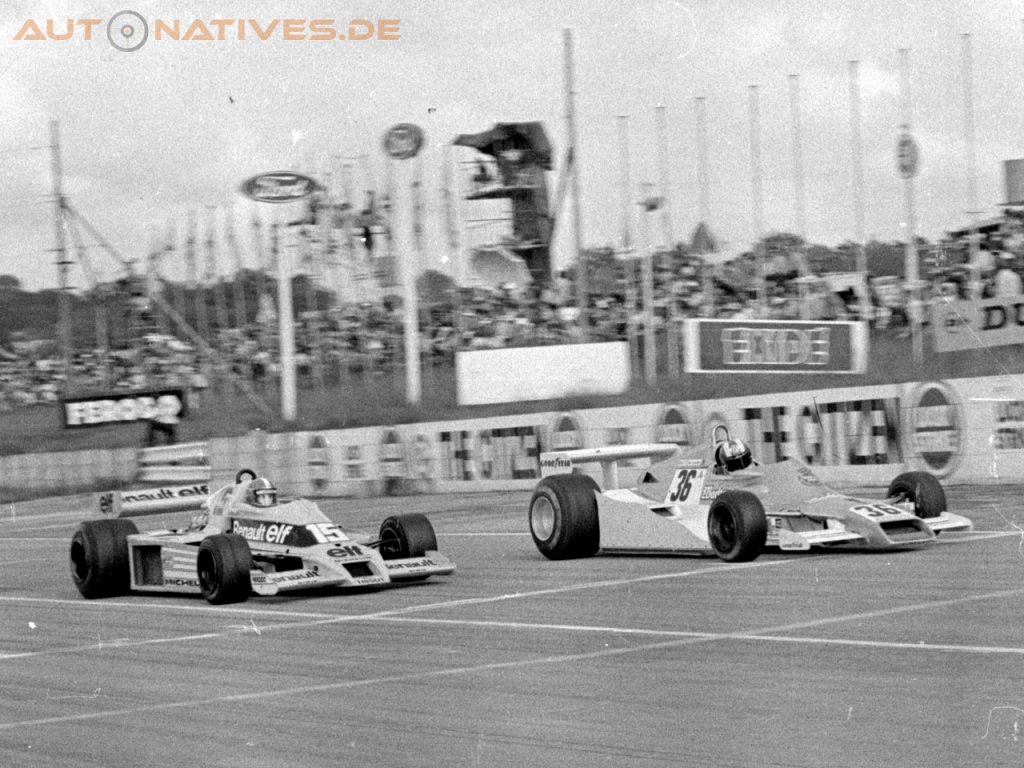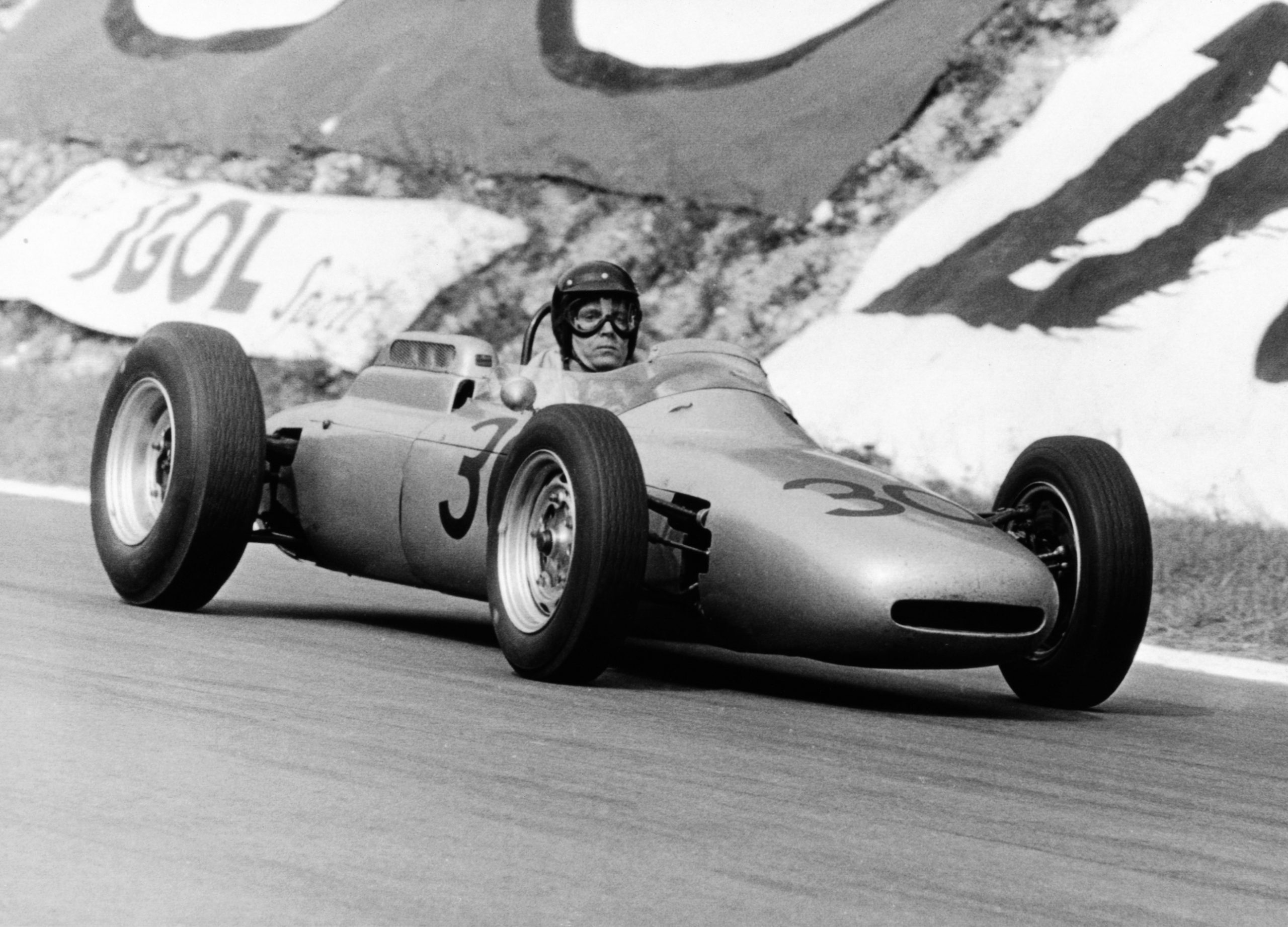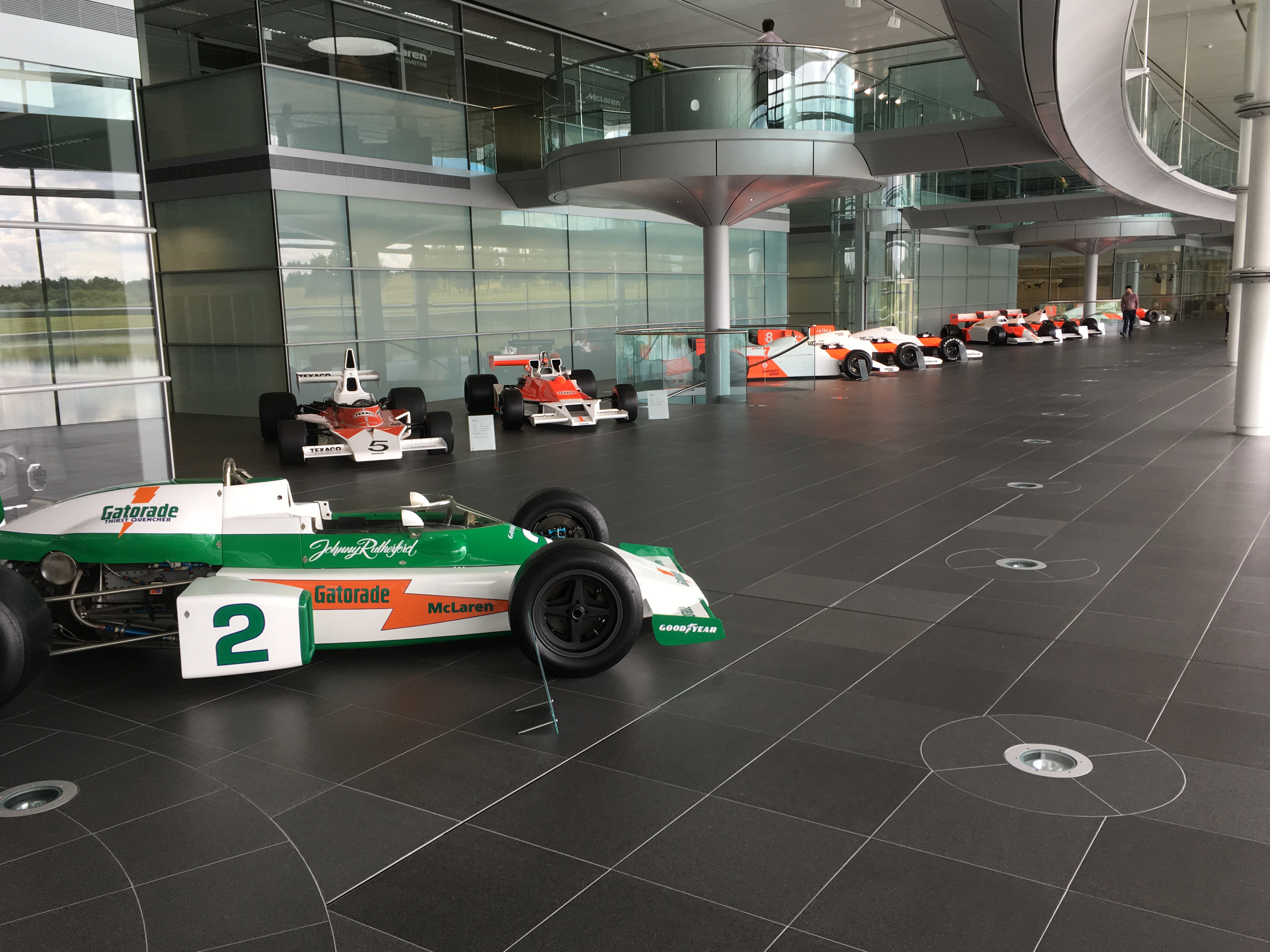Is the new Aston Martin a copy of the Red Bull? Probably, but even a quick look at Formula 1 history shows that copying is not a new topic in Formula 1. It only gets really interesting when the teams „took over“ (almost) the whole car. Three stories stand out in particular.

Formula 1 is currently discussing the similarity of the new Aston Martin to last year’s Red Bull. With Dan Fallows, a long-time aerodynamicist moved from Red Bull to Aston Martin. Fallows has been Technical Director there since April 2022. As usual in these cases, the Briton was soon followed by other former colleagues from Red Bull. Dr. Helmut Marko pointed out in an interview with „Sky“ in Bahrain that they obviously have a good memory. Even if all those involved are now trying to downplay the topic, the Aston Martin is reminiscent of the Red Bull. No wonder Sergio Perez joked about the similarity at the FIA press conference. None of this will probably have any consequences. After all, some competition inspires the product Formula 1, which helps all teams.
Formula 1 thrives on exciting races!
Because if the winner is determined in advance, then the ratings drop. The older ones in the paddock remember 1988 with horror. At that time, the McLaren MP4/4 with its Honda engine was unbeatable. Luckily, McLaren boss Ron Dennis let his drivers Ayrton Senna and Alain Prost race freely against each other. The duo won 15 of the then 16 races of the season and split over it. Only in Monza did a Ferrari win. Because there Ayrton Senna collided while lapping with a Williams. Of course, the Brazilian was in the lead. But then Mansell replacement Jean-Louis Schlesser proved at his only Grand Prix that he lacked the format for the premier class. After all, Ferrari won the first home race after the death of Enzo Ferrari.
Even the Ferrari years at the beginning of the millennium, when Michael Schumacher was partly determined as champion shortly after the summer break, were bad for business. Detached from this, copying is traditionally simply part of Formula 1. This applies to concepts, to details and to entire cars. Shortly after the Cooper reminded that an engine also works behind the pilot, the whole field mothballed its front-engine cars. At the end of the 1960s, as soon as the first person screwed a grand piano to his car, others copied it. And when Lotus proclaimed the age of wing cars with the Lotus 78 in 1977 , competitors soon screwed side sealing strips under their cars and adapted their underbodies.
Formula 1 or formula copy? It was always copied!
Copying in Formula 1 has always been part of the competition. In this respect, one does not have to be a prophet to foresee that everyone will probably come to terms with the current situation today. Because Red Bull should, unless something completely unforeseen happens, still go to the World Championship this year. If Aston Martin puts a few splashes of colour over the course of the season, then everyone is happy because it brings spectators. In addition, Formula 1 has been copied much more brazenly in the past. Three cases stand out in particular.
1. Rebaque HR 100 – the completely unsuccessful Lotus 79
Mexican Héctor Rebaque came to Europe in the 1970s and aspired to a motorsport career. With his parents‘ money, Rebaque competed in the 24 Hours of Le Mans at the age of 18. A year later, the Mexican took part in a few rounds of the Formula 2 European Championship and also drove in Formula Atlantic. Rebaque did not celebrate any major successes. Nevertheless, the Mexican sat in 1976 in the Formula Atlantic in a Lolaof the top team Carl Haas Racing. Money has always been able to replace a lack of talent in motorsport. And so the rise of the Mexican continued apace.
As early as 1977, Héctor Rebaque competed for Hesketh Racing in Formula 1. Here drove now, who had money! In six attempts, the Mexican was able to qualify his Hesketh only once. Rebaque made his Grand Prix debut at the Hockenheimring. A year later, the 22-year-old returned to the Grand Prix circus with his own team. Colin Chapman sold the Mexican a race car from the previous season, which from then on was used by Team Rebaque. Also with the Lotus Héctor Rebaque regularly failed at the hurdle of qualification.
But at the Hockenheimring, the Mexican surprisingly scored a World Championship point in one of his rare race participations. Apparently, Rebaque was the fast Baden track with the then long straights in the forest. Also for 1979, the Rebaque team initially competed again with a previous year’s racing car from Lotus. With the Lotus 79, which dominated the World Championship a year earlier, the Mexican now managed to make it into the field of starters. Therefore, the scene was surprised when Team Rebaque suddenly entered the Italian Grand Prix with its „own“ car. The Rebaque HR 100 was created in the workshop of Penske Racing in Poole, UK, and took copying in Formula 1 to a new level.
Roger Penske ran his own Formula 1 team in Poole from 1974 to 1976. Its inventory was taken over in 1977 by ATS boss Günter Schmid. Nevertheless, Penske built a race car for Rebaque two years later. The Rebaque HR 100 was largely a copy of the Lotus 79. Only with the sidepods designer Geoff Ferris, who previously designed the Penske PC4, took a different path. The sidepods of the HR 100 were reminiscent of the Williams FW07, which was the fastest car in the scene in the summer of 1979. Héctor Rebaque competed three times with the Rebaque HR 100, but twice missed the qualification. Talent cannot be copied.
2. Rial or a blue Ferrari?
At the end of the 1980s, some new teams flocked to Formula 1. They were attracted by the ban on turbo engines, which took effect at the end of 1988. Because the return of the naturally aspirated engines should reduce the previously exploded costs. Optimists thought it was again possible to compete in the premier class for a year with a single-digit million amount. With a low double-digit million amount, even a regular point win should be possible. This also lured Günter Schmid, who ran the ATS team from 1977 to 1984, back to the premier class. Schmid had owned the rim manufacturer RIAL since the beginning of 1987.
As before at ATS, where Schmid always owned „only“ half of the company, the manager at RIAL again relied on advertising his rims with his own team. As a designer, Schmid brought back the Austrian Gustav Brunner from Ferrari. Both had previously worked together at ATS. At Ferrari, Brunner designed a racing car for the Indianapolis 500. But when Bernie Ecclestone gilded Enzo Ferrari’s start in Formula 1, the Ferrari 637remained unused. Parallel to the 637, Gustav Brunner also designed the F1/87 for the premier class at Ferrari. But the Austrian’s love for the red goddess waned when Enzo Ferrari poached designer John Barnard from McLaren.
Brunner turned his back on Italy and began building a new car for Günter Schmid. This resulted in the Rial ARC1, which obviously „leaned“ on the Ferrari F1/87. In the paddock, the German racing car, despite its Cosworth engine, was almost immediately regarded as a „blue Ferrari“. Copying in Formula 1 was also an issue back then. Or did Gustav Brunner also only have a good memory? With Andrea de Cesaris in the cockpit, Rial won three world championship points in 1988. This made RIAL the most successful of the new teams that competed in 1988. Unlike EuroBrun Racing and BMS Scuderia Italia, RIAL jumped the hurdle of qualifying at all Grand Prix in its debut year. At the race in Detroit, de Cesaris even narrowly missed the podium in fourth place.
Only the small tank of the racing car prevented more success. Because de Cesaris failed several times without gasoline. This somehow fits in with the fact that Günter Schmid ran the team on an absolute low flame. There was no workshop of its own. The team operated out of the rim factory. Even at the race tracks, a maximum of 15 people worked for RIAL. How simple Formula 1 was 35 years ago! Nevertheless, the idea of selling rims with the help of Formula 1 worked. Sales of RIAL rims increased by 50 percent. But when Gustav Brunner turned his back on the team in the summer of 1988, RIAL’s performance collapsed. The 1989 season earned the title „embarrassing“. Despite now having two racing cars, RIAL only managed to make it into the starting field in four races. At the end of the year, the team closed down.
An arrow with shadow – Arrows FA1 was the Shadow DN9
Unlike the previous cases, which the copied tolerated such stories, as with many others, our third example of copying in Formula 1 even occupied the courts. Because when the Arrows FA1 was in the paddock in Brazil in 1978, the car largely resembled the Shadow DN9. Given that Arrows founders Alan Rees, Jackie Oliver, Dave Wass and Tony Southgate had all previously worked at Shadow, the four probably had a good memory. The situation was exacerbated by the fact that they founded Arrows with the support of Franco Ambrosio. The Italian was previously a sponsor of Shadow. Shadow boss Don Nichols, who was never a spy, immediately sued Arrows.

On 31 July 1978, the judgment was handed down at the London High Court. The judges agreed that the Arrows, whose type designation FA1 honored financier Franco Ambrosio, violated Shadow’s rights. Arrows had to build a new car. The British team was probably prepared for defeat. Because in the former Arrows workshop in Milton Keynes, a new racing car was created with the Arrows A1. From the Austrian Grand Prix, the Arrows drivers Riccardo Patrese and Rolf Stommelen sat in the „new“ Arrows. Of course, the Arrows A1 was still based on the Shadow DN9. Designer Tony Southgate, who designed both cars, apparently created enough distinguishing features.
Only with the A2 there was actually a new car at Arrows. The three examples show that copying has a long tradition in Formula 1. In this respect, everything has already been there in the current discussions about the Aston Martin. It is inevitable that employees who change also take know-how with them. Just as Dan Fallows moved from Red Bull to Ferrari, Gustav Brunner joined RIAL from Ferrari in 1987. Brunner was almost a serial offender. The RAM03, which the Austrian designed in 1985, is also reminiscent of the ATS D6 and D7 from previous years, also from Brunner.
Infos zum Titelbild dieses Beitrags:
Pressefoto von RIAL mit dem RIAL ARC 01 von 1988. Designer des ARC 01 war Gustav Brunner, der zuvor dem Ferrari F1/87 entwarf. Daher überrascht nicht, dass der RIAL ARC 01 dem Ferrari ziemlich ähnlich sieht.
Foto: RIAL
AutoNatives.de ist auch bei Facebook. Wir freuen uns über ein Like.





 Die Veröffentlichung von Werbung ermöglicht uns den Betrieb dieses Blogs. Klicken Sie deshalb bitte auf „Akzeptieren“, um autonatives.de mit Werbung externer Partner zu nutzen.
Die Veröffentlichung von Werbung ermöglicht uns den Betrieb dieses Blogs. Klicken Sie deshalb bitte auf „Akzeptieren“, um autonatives.de mit Werbung externer Partner zu nutzen.